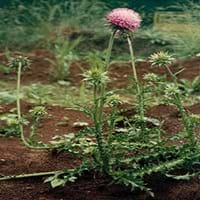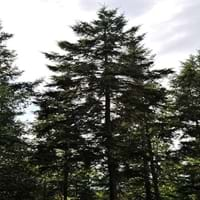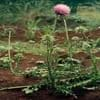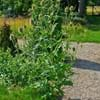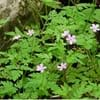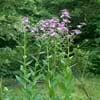Life Span
Biennial
Perennial
Type
Bulb, Flowering Plants
Needled or Scaled Evergreen
Origin
World/Pandemic, Europe, Asia
North-Central United States
Types
Crocus tommasinianus, Crocus etruscus, Crocus vernus, Crocus cambessedesii
Blue Spruce, Norway Spruce, Picea omorika
Number of Varieties
Not Available
Habitat
gardens, Grassland, open Woodlands, orchards, Pastures, tropical environments
Bog Garden, Woodland Garden Canopy
USDA Hardiness Zone
2-10
2-7
Sunset Zone
21,22
A1, A2, A3, 1a, 1b, 2a, 2b, 3a, 3b, 4, 5, 6, 7, 14, 15, 16, 17
Habit
Upright/Erect
Pyramidal
Flower Color
Red, Violet
Not Available
Flower Color Modifier
Bicolor
Bicolor
Fruit Color
Not Available
Not Available
Leaf Color in Spring
Green, Dark Green
Green, Blue Green, Dark Green
Leaf Color in Summer
Dark Green
Blue Green, Dark Green
Leaf Color in Fall
Dark Green
Green, Dark Green
Leaf Color in Winter
Light Green
Gray Green, Dark Green, Black
Leaf Shape
Ovate
Needle like
Plant Season
Spring, Summer, Winter
Spring, Summer, Fall, Winter
Sunlight
Full Sun, Partial Sun
Full Sun, Partial Sun
Growth Rate
Very Fast
Medium
Type of Soil
Clay, Loam, Sand
Loam
The pH of Soil
Acidic, Neutral, Alkaline
Acidic, Neutral
Soil Drainage
Well drained
Average
Bloom Time
Spring, Late Spring, Early Summer, Summer
Not Available
Tolerances
Pollution, Drought, Salt, Soil Compaction
Drought
Where to Plant?
Container, Ground
Ground
How to Plant?
Seedlings
Seedlings, Semi-ripe cuttings
Plant Maintenance
Low
Medium
Watering Requirements
Average Water Needs, Do Not over Water, Never Over-water, Requires regular watering
Average Water Needs, Do Not over Water, Requires regular watering
In Summer
Lots of watering
Lots of watering
In Spring
Moderate
Moderate
In Winter
Average Water
Average Water
Soil pH
Acidic, Neutral, Alkaline
Acidic, Neutral
Soil Type
Clay, Loam, Sand
Loam
Soil Drainage Capacity
Well drained
Average
Sun Exposure
Full Sun, Partial Sun
Full Sun, Partial Sun
Pruning
Prune to stimulate growth, Remove damaged leaves, Remove dead leaves, Remove deadheads
Remove damaged leaves, Remove dead branches, Remove dead leaves, Remove dead or diseased plant parts
Fertilizers
Nitrogen, Phosphorous, Potassium, Requires high amount of nitrogen
All-Purpose Liquid Fertilizer, Apply 12-12-12 amounts, Nitrogen, Phosphorous, Potassium
Pests and Diseases
Insects, Red blotch
Red blotch
Plant Tolerance
Not Available
Drought
Flower Petal Number
Not Available
Single
Foliage Texture
Coarse
Fine
Foliage Sheen
Glossy
Glossy
Attracts
Flying insects
Birds
Allergy
Diarrhea, Nausea, Vomiting
Not Available
Aesthetic Uses
Beautification, Showy Purposes
Showy Purposes
Beauty Benefits
Not Available
Not Available
Environmental Uses
Air purification, Food for insects
Air purification, Shadow Tree, Wildlife, Windbreak
Medicinal Uses
Unknown, Unknown
Antiseptic, Digestive, Diuretic, Laxative, Pectoral, Poultice, Salve, Skin Disorders, tuberculosis
Part of Plant Used
Stem
Inner Bark, Seeds
Other Uses
Decoration Purposes
Gum, Pitch, Repellent, String, Tannin, Used as a dye, Used for woodware, Used in making musical instruments, Used in paper industry, Waterproofing, Wood is used in construction
Used As Indoor Plant
No
No
Used As Outdoor Plant
Yes
Yes
Garden Design
Not Available
Feature Plant, Hedges, Screening, Wind Break
Botanical Name
CARDUUS nutans
PICEA glauca 'Densata'
Common Name
Musk Thistle, Nodding Thistle
White Spruce
In Hindi
कस्तूरी थीस्ल
Black Hills Spruce Tree
In German
Nickende Distel
Weiß-Fichte
In French
Musk Thistle
Épinette blanche
In Spanish
Cardo de almizcle
Picea glauca
In Greek
musk Thistle
Black Hills Spruce Tree
In Portuguese
musk Thistle
Pinheiro-do-canadá
In Polish
Musk Thistle
Black Hills Spruce Tree
In Latin
Carduus MOSCHUS
Picea glauca
Phylum
Magnoliophyta
Coniferophyta
Class
Magnoliopsida
Pinopsida
Family
Asteraceae
Pinaceae
Clade
Angiosperms, Asterids, Eudicots
Not Available
Tribe
Cynareae
Not Available
Subfamily
Carduoideae
Barnadesioideae
Number of Species
Not Available
Not Available
Season and Care of Musk Thistle and Black Hills Spruce
Season and care of Musk Thistle and Black Hills Spruce is important to know. While considering everything about Musk Thistle and Black Hills Spruce Care, growing season is an essential factor. Musk Thistle season is Spring, Summer and Winter and Black Hills Spruce season is Spring, Summer and Winter. The type of soil for Musk Thistle is Clay, Loam, Sand and for Black Hills Spruce is Loam while the PH of soil for Musk Thistle is Acidic, Neutral, Alkaline and for Black Hills Spruce is Acidic, Neutral.
Musk Thistle and Black Hills Spruce Physical Information
Musk Thistle and Black Hills Spruce physical information is very important for comparison. Musk Thistle height is 90.00 cm and width 30.00 cm whereas Black Hills Spruce height is 1,219.20 cm and width 365.76 cm. The color specification of Musk Thistle and Black Hills Spruce are as follows:
Musk Thistle flower color: Red and Violet
Musk Thistle leaf color: Green and Dark Green
Black Hills Spruce flower color: Not Available
- Black Hills Spruce leaf color: Green, Blue Green and Dark Green
Care of Musk Thistle and Black Hills Spruce
Care of Musk Thistle and Black Hills Spruce include pruning, fertilizers, watering etc. Musk Thistle pruning is done Prune to stimulate growth, Remove damaged leaves, Remove dead leaves and Remove deadheads and Black Hills Spruce pruning is done Remove damaged leaves, Remove dead branches, Remove dead leaves and Remove dead or diseased plant parts. In summer Musk Thistle needs Lots of watering and in winter, it needs Average Water. Whereas, in summer Black Hills Spruce needs Lots of watering and in winter, it needs Average Water.
